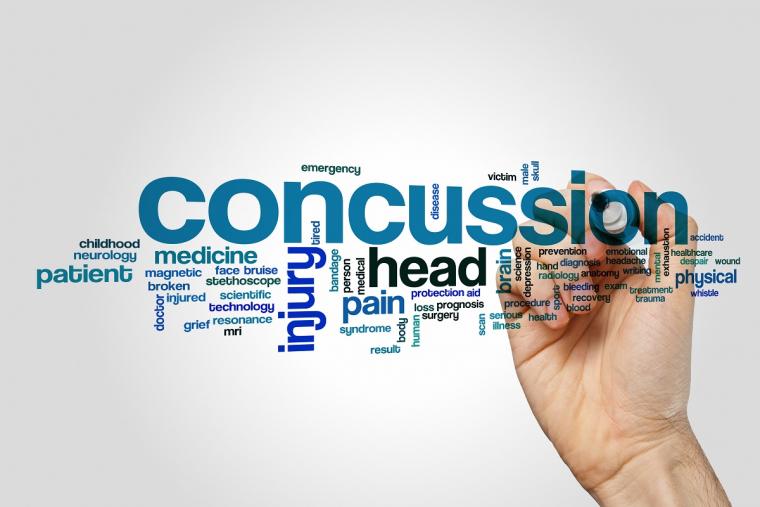

As parasports events become more prevalent, the need to assess concussions in wheelchair athletes grows more urgent. That’s where a group of Wisconsin-based doctors comes in.
“We realized we were missing concussions with these athletes,” Ken Lee, head of the Spinal Cord Injury Center at the Milwaukee VA Medical Center told VA.gov. “As we looked into it more, we started doing research and realized we needed to do bigger awareness.”
To that end, Lee and three colleagues recently edited Concussion Management for Wheelchair Athletes (Springer Publishing) a first-of-its-kind book with chapters covering everything from concussion baseline testing and evaluation of signs and symptoms to balance testing in wheelchair athletes and vestibular examinations.
“Because wheelchair athletes participate in sport while sitting down and using a wheelchair, clinicians must be extra attentive to identify a potential concussion,” notes the Introduction of the 227-page book. “Once a potential concussion is identified, there are many challenges in evaluation of the wheelchair athlete population due to their comorbidities. At baseline, they may have signs and symptoms that mimic a concussion, and their impairments can also alter their cognitive and balance assessments. Therefore, it is critical to make a distinction between these athletes’ baseline comorbid impairments and potential new exam findings in a concussion.”
“This is the first concussion book for wheelchair athletes,” said Lee, who also is an associate professor with the Department of Physical Medicine and Rehabilitation at the Medical College of Wisconsin and a longtime proponent of wheelchair sports. “Since there was nothing out there, people are not as aware, so we wanted to share that awareness. … We have to know how to treat these athletes. Hopefully this will encourage others to do more research.”
Concussion Management for Wheelchair Athletes is intended for anyone involved with wheelchair sports — including participants, coaches, families and sideline supporters.
“We want it to be a resource for coaches and others in the community so they have a better understanding of concussions,” added co-editor Michael Harper from the Medical College of Wisconsin’s Department of Physical Medicine and Rehabilitation. “There’s a ton of research on able-bodied athletes, but not on athletes with disabilities. And when you add in the extra wrinkles of people with disabilities — different physical and cognitive abilities — it is difficult to navigate.”
Lee’s team received $108,000 in grants to create the book, which is funded through the VA Adaptive Sports Grant Program by the National Veterans Sports Programs and Special Events Office and the Paralyzed Veterans of America Education Grant.
In other concussion-related news:
• Researchers studying the link between youth football and concussions have determined that such conditions as attention-deficit/hyperactivity disorder, anxiety and depression may play a greater role in neurocognitive performance than repetitive head impacts. The study, published on JAMA Network Open in December included 70 boys ages 9 to 12 who played tackle football over four consecutive seasons. “It is reassuring that we are not seeing poor outcomes on cognitive or neurocognitive tests in childhood over the course of consecutive years of play, but we can’t fast forward to see what will happen 40 years after childhood contact sport exposure,” said study author Sean Rose, a pediatric neurologist and co-director of the Complex Concussion Clinic at Nationwide Children’s Hospital in Columbus, Ohio, told USNews.com
• A new study by the Centers for Disease Control and Prevention indicates that nearly 7 percent of children 17 and younger have experienced symptoms of a concussion or brain injury at some point in their life, while almost 4 percent have been diagnosed with a concussion or brain injury by a health care provider. Non-Hispanic White children were more likely than children of other races to have experienced symptoms. The most common types of head injuries are caused by falls, car crashes, abuse and sports, Michael Grosso, chief medical officer and chair of pediatrics at Huntington (N.Y.) Hospital, told USNews.com. “As pediatricians, we are especially concerned about return to activity for children with concussion, since doing so too rapidly can place the child at risk for a second injury, which carries its own risks,” he said.
• Magnetic resonance imaging might be able to detect chronic traumatic encephalopathy, or CTE, in living patients. Currently, the concussion-linked brain condition can only be diagnosed after death. But new research published in the journal Alzheimer’s Research & Therapy includes analysis of the medical records and MRIs of 86 deceased male brain donors. They included 55 men who’d been diagnosed with CTE after death and 31 men with healthy brains, according to UPI.com. The MRIs showed that the men diagnosed with CTE after death had shrinkage in key regions of the brain associated with CTE. “Findings from this study show us what we can expect to see on MRI in CTE,” said lead author Michael Alosco from Boston University’s Alzheimer’s Disease Research Center and CTE Center. “This is very exciting because it brings us that much closer to detecting CTE in living people.” All-Pro NFL linebacker Junior Seauand All-Pro NFL safety Dave Duerson are among the former football players who were diagnosed with CTE after their deaths.

